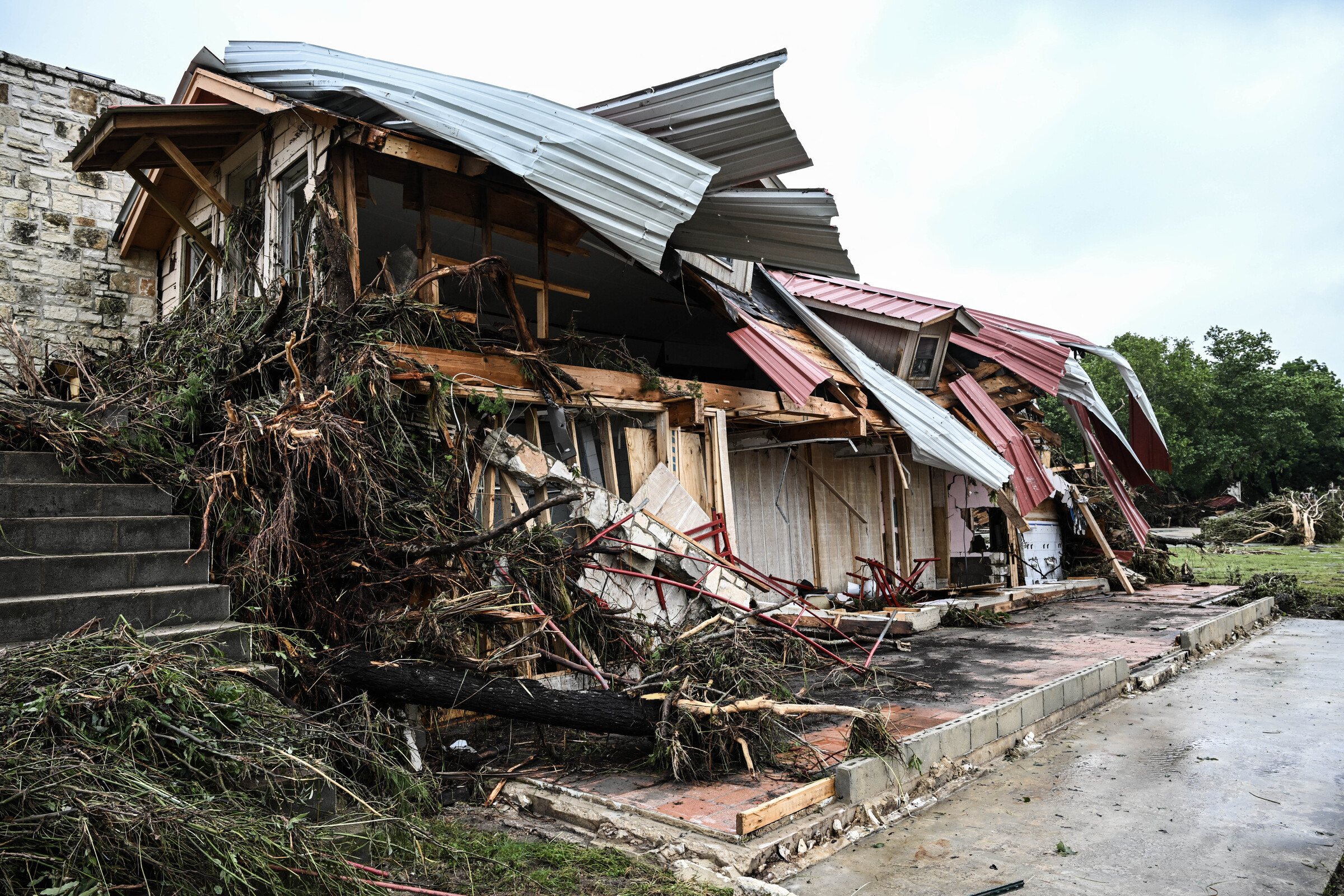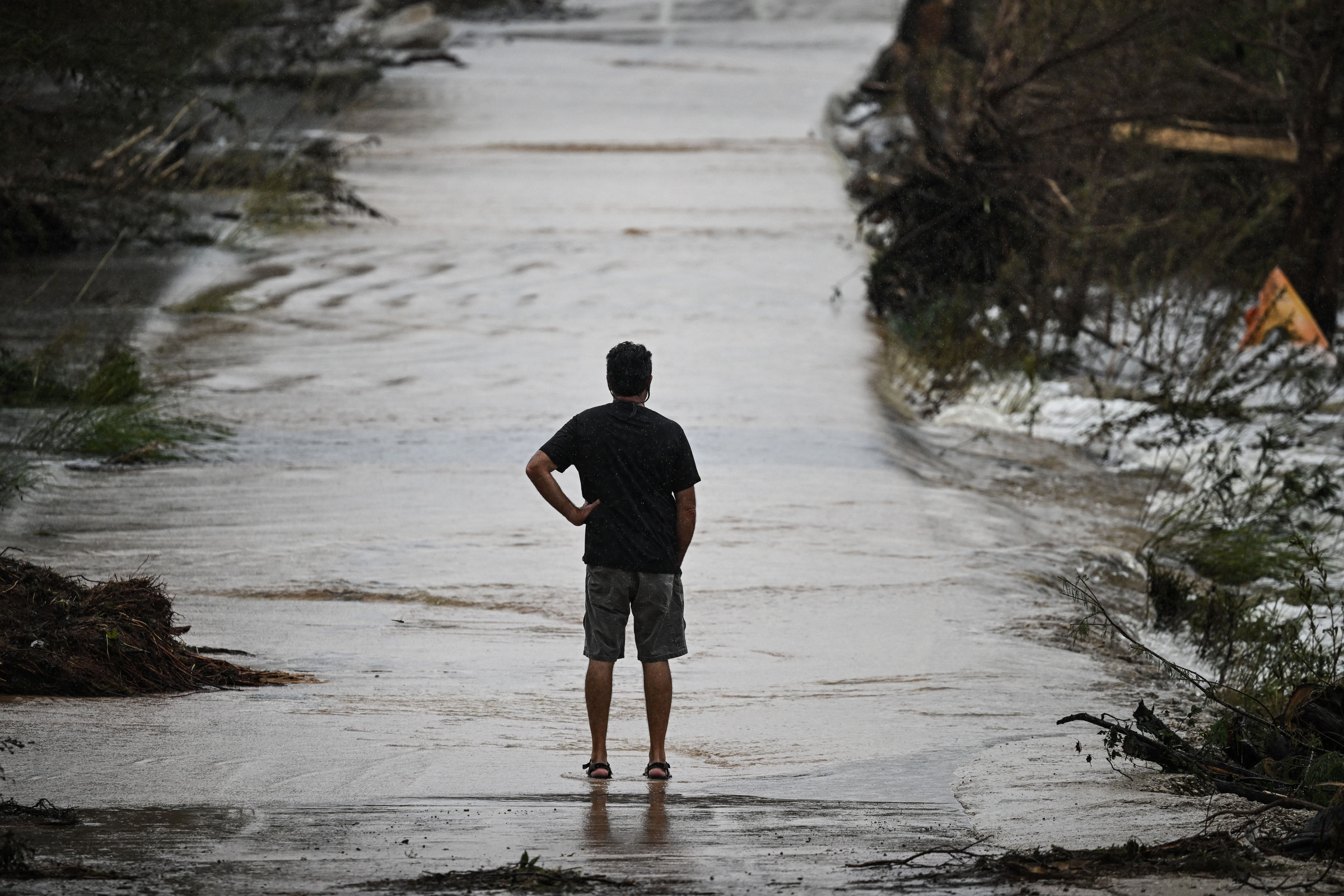Flash floods ripped through Texas Hill Country in central Texas, USA, after the area received up to 300 mm of rain in the early hours of 4/7. The Guadalupe River rose 8 meters in just 45 minutes, inundating summer camps set up along the river for the Independence Day holiday.
While flash floods are common in Texas Hill Country, the region has never experienced such a devastating loss of life. The overnight deluge killed at least 81 people, including 29 children in Kerr County. Rescue workers are still searching for more than 40 missing people.
Experts attribute the high death toll to a confluence of natural and human factors.
Tropical Storm Barry made landfall in eastern Mexico on the morning of 6/30, then tracked north until it encountered a high-pressure system over central Texas, according to meteorologist Adalaigh Rower of FOX 7 Austin.
 |
The rain-soaked area in Texas Hill Country. Photo: NWS |
"The high-pressure system blocked the storm's movement, trapping all the moisture and low pressure, creating what's called 'training thunderstorms,' where heavy rain repeatedly drenches the same area," Rowe explained.
These “training thunderstorms” stalled over Texas Hill Country, a region known as “Flash Flood Alley” between Dallas and San Antonio. The downpour on the morning of 4/7 dumped more than 450 million cubic meters of water on Kerr County, according to a meteorologist.
Texas Hill Country is semi-arid, with thin soil over hard rock, unable to absorb large amounts of water quickly. "The water just runs off, like on concrete," the meteorologist added.
The region's hilly terrain means floodwaters rise rapidly after heavy rain. Narrow canyons funnel the rushing water into creeks and rivers, causing swift rises and deadly flash floods.
 |
A house destroyed by the July 4th flash flood in Hunt, west of Kerr County, Texas. Photo: AFP |
"Water in the creeks flows very fast, and floods can appear almost instantly," said Hatim Sharif, a civil engineering professor at the University of Texas who studies the effects of water on terrain. "In just 90 minutes, the water can rise by more than 6 meters."
Much of the rainwater flowed into the Guadalupe River, which stretches over 400 km from western Kerr County.
The area around the Guadalupe River is typically sparsely populated, but on 4/7 it was filled with holiday visitors, especially students attending summer camps.
"There were thousands of people in the area. They were in tents, trailers, or renting small houses on the riverbank. We don't know exactly who they are. There were a lot of tourists in a town of 20,000," said Texas Lieutenant Governor Dan Patrick.
Texas officials stated the flash floods occurred overnight, catching people off guard as the river rose in minutes.
Texas officials also believe the National Weather Service (NWS) underestimated the rainfall on 4/7. The NWS issued a flash flood warning for Kerr County around 1:44 AM on 4/7, by which time the Guadalupe River had already reached its second-highest level in history, surpassing the 1987 flood.
Prior to that, most mobile phone alerts came from the NWS Austin/San Antonio station. However, some life-threatening flood warnings were only issued before dawn, and sent to areas with potentially weak or intermittent mobile signals.
US media outlets reported that key positions in local NWS offices were vacant when the heavy rain hit. This was a result of large-scale staff cuts implemented by the District of Government Efficiency (DOGE) in recent months.
This has led some experts to question whether the staffing shortages in essential areas hampered coordination with local emergency responders during the flooding.
Former NWS officials argue that given the record rainfall and unusually rapid development of the storm, the forecasts were as accurate as possible under the circumstances. However, they acknowledge the staffing shortage reflects a more serious problem: the departure of experienced personnel who played a key role in communicating with and supporting local agencies immediately after flash flood warnings were issued at night.
The staffing shortage is expected to be a key focus of investigations as the flood death toll continues to rise.
When asked about the issue, US Secretary of Homeland Security Kristi Noem said she would convey these concerns to President Donald Trump. "We will do everything we can to fix the things that may have disappointed you or the people in your community," Noem said.
There are also questions about the preparedness of local communities, including Kerr County, which apparently lacked a local flood warning system. The county, located about 80 km northwest of San Antonio, accounted for most of the flood fatalities.
Kerr County Judge Rob Kelly admitted the county had no warning system on the Guadalupe River. When a reporter asked why Kerr officials didn't order evacuations on 3/7, Kelly responded that they "didn't know the flash flood was coming."
"Flooding happens frequently where we are. This is the most dangerous river valley in the USA, we deal with floods almost daily. When it rains, the water pours down. We saw no indication that this rain event would turn into such a disaster," Kelly said.
Records show that Kerr County officials in 2016 considered funding an early warning system, including sirens, to better prepare residents for floods. However, this plan was never implemented.
 |
A man looks at a flooded road after the July 4th flash flood in Hunt, Texas. Photo: AFP |
"Everything on 4/7 came together in all the wrong places," Alan Gerard, a hurricane specialist at the National Oceanic and Atmospheric Administration (NOAA), told USA Today.
Professor Sharif believes the Texas Hill Country flash flood disaster highlights the need for improved weather forecasting models to help people understand the potential consequences of varying rainfall amounts in their area.
"People need to know what 150-170 mm of rain will do to the area where they live," he said. "Will the roads flood? There need to be specific models and information so emergency responders can act quickly."
Nhu Tam (According to WSJ, AP, CNN)












